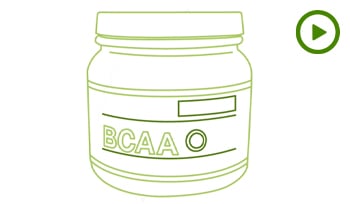5 BIG Reasons to Love Whey Protein
DISCLAIMER:This blog does not intend to provide diagnosis...

Whey is a natural byproduct of the cheese making process. Cow’s milk has about 6.25% protein. Of that protein, 80% is casein (another type of protein) and the remaining 20% is whey. When cheese is made, it uses the casein molecules leaving the whey behind. Whey protein is made via filtering off the other components of whey such as lactose, fats, and minerals. Whey protein is a soluble, easy to digest, and is efficiently absorbed into the body. When taken prior to a meal, it improves blood sugar control.
1. Protein Quality
Whey protein has the highest biological value of all proteins. In order to assess the quality of a protein, scientists measure the proportion of the amino acids that are absorbed, retained, and used in the body to determine the protein’s biological value (BV).
Whey protein is a complete protein in that it contains all essential and nonessential amino acids. One of the key reasons why the BV of whey protein is so high is that it has the highest concentrations of glutamine and branched chain amino acids (BCAAs) found in nature. Glutamine and branched chain amino acids are critical to cellular health, muscle growth, and protein synthesis.
2. Its Rich in Glutamine
Glutamine, the most abundant amino acid in the body, is involved in more metabolic processes than any other amino acid. Glutamine is important as a source of fuel for white blood cells, and for cells that divide rapidly, such as those that line the intestine. Supplementation with glutamine has been shown to heal peptic ulcers, enhance energy levels, boost immune function, and fight infections.
Although bodybuilders and athletes use whey protein to increase their protein intake, almost everyone can gain benefit by adding whey protein to their diet. Whey protein is especially important as an aid for weight loss, nutritional support for recovery from surgery, and to offset some of the negative effects of radiation therapy and chemotherapy.
Research has shown that individuals who exercise benefit from diets high in the essential amino acid leucine and have more lean muscle tissue and less body fat, compared to those whose diets contain lower levels of leucine. Whey protein concentrates have approximately 50% more leucine than soy protein isolate.
3. Whey Protein Boosts Glutathione Levels
Whey protein has been shown to boost immune function by raising the levels of the important antioxidant glutathione that is found in all cells including white blood cells. Sufficient glutathione levels are critical to proper immune functioning. In immune cells, glutathione stimulates antibody production and the ability of white blood cells to engulf and destroy invading organisms.
Glutathione is also involved in the body’s detoxification reactions and is able to bind to fat-soluble toxins such as heavy metals, solvents, and pesticides, transforming them into a water-soluble form, allowing for more efficient excretion via the kidneys. Eating additional whey protein is one of the best ways to raise glutathione levels in the body and assist in effective detoxification.
4. Whey Promote is a Dieter’s Friend
Whey protein ingestion has been shown to reduce feelings of hunger and promote satiety making it a valuable aid in weight loss programs. It contains bioactive components that help stimulate the release of three appetite-suppressing gut hormones: cholecystokinin (CCK), peptide tyrosine-tyrosine (PYY), and glucagon-like peptide-1 (GLP-1).
One of the best strategies for utilizing whey protein is taking it before or between meals. Studies have shown that consumption of whey protein in small amounts prior to a meal, improves after-meal blood sugar control and also leads to greater satiety and appetite control. Many of these benefits are the result of bioactive components in whey that stimulate the release of three appetite-suppressing hormones found in the gut: cholecystokinin (CCK), peptide tyrosine-tyrosine (PYY), and glucagon-like peptide-1 (GLP-1). By stabilizing blood sugar levels and reducing hunger, dieting is easier and success more likely.
Vegan sources of protein do not seem to be able to duplicate these weight loss benefits. In a study conducted at University of Birmingham in the United Kingdom, 40 overweight men and women completed a 14-day calorie restricted diet and were randomly assigned, double blind, to receive twice-daily supplements of isolated whey (27g) or soy (26g), or maltodextrin (25g). Using a blood measurement for muscle fiber synthesis, results indicated that muscle breakdown was significantly less in the whey protein group than that seen in the soy and maltodextrin groups. In fact, soy protein had no effect on reducing muscle loss. These results indicate that whey protein supplementation can help preserve muscle mass during weight loss.
5. Whey Protein Fights Aging
One of the most preventable changes associated with aging is the loss of muscle mass and strength, which is called sarcopenia. Sarcopenia is to muscle mass what osteoporosis is to bones. While osteoporosis gets all the media attention, sarcopenia is a more significant factor. The degree of sarcopenia is the major predictor of physical disability and is linked to decreased vitality, poor balance, walking speed, falls, and fractures, especially with elderly people.
Just like building strong bones when young is important in preventing osteoporosis later in life, building and maintaining muscle mass is essential for avoiding sarcopenia. Muscle mass increases throughout childhood and peaks during the late teens through the mid-to late 20s. After that, a slow decline in muscle mass begins. From the age of 25 to 50 the decline in muscle mass is roughly 10%. In our 50’s the rate of decline is slightly accelerated, but the real decline usually begins at 60 years. By the time a person reaches 80 his or her muscle mass is a little more than half of what it was in their twenties. Taking whey protein and engaging in weight bearing exercises and lifting weights can help preserve muscle mass and can even help those with sarcopenia rebuild.
How to Get More Whey Into Your Diet
The amount of whey protein you need depends on how active you are. If you are active and workout regularly, 50g of whey protein daily is often recommended. If you exercise infrequently, the recommended intake is 25g per day.
The easiest way to use whey is by adding whey powder to smoothies or drink mixes. Whey protein powder is available in a variety of flavors including vanilla, chocolate, and strawberry available in pre-measured individual serving packets and bulk containers.
The highest quality is often referred to as micro-filtered or ultra-filtered whey protein concentrates. And, obviously, when looking to purchase whey protein choose products that do not contain a lot of sugar or food additives.

 By Dr. Michael Murray, N.D.
By Dr. Michael Murray, N.D. 


